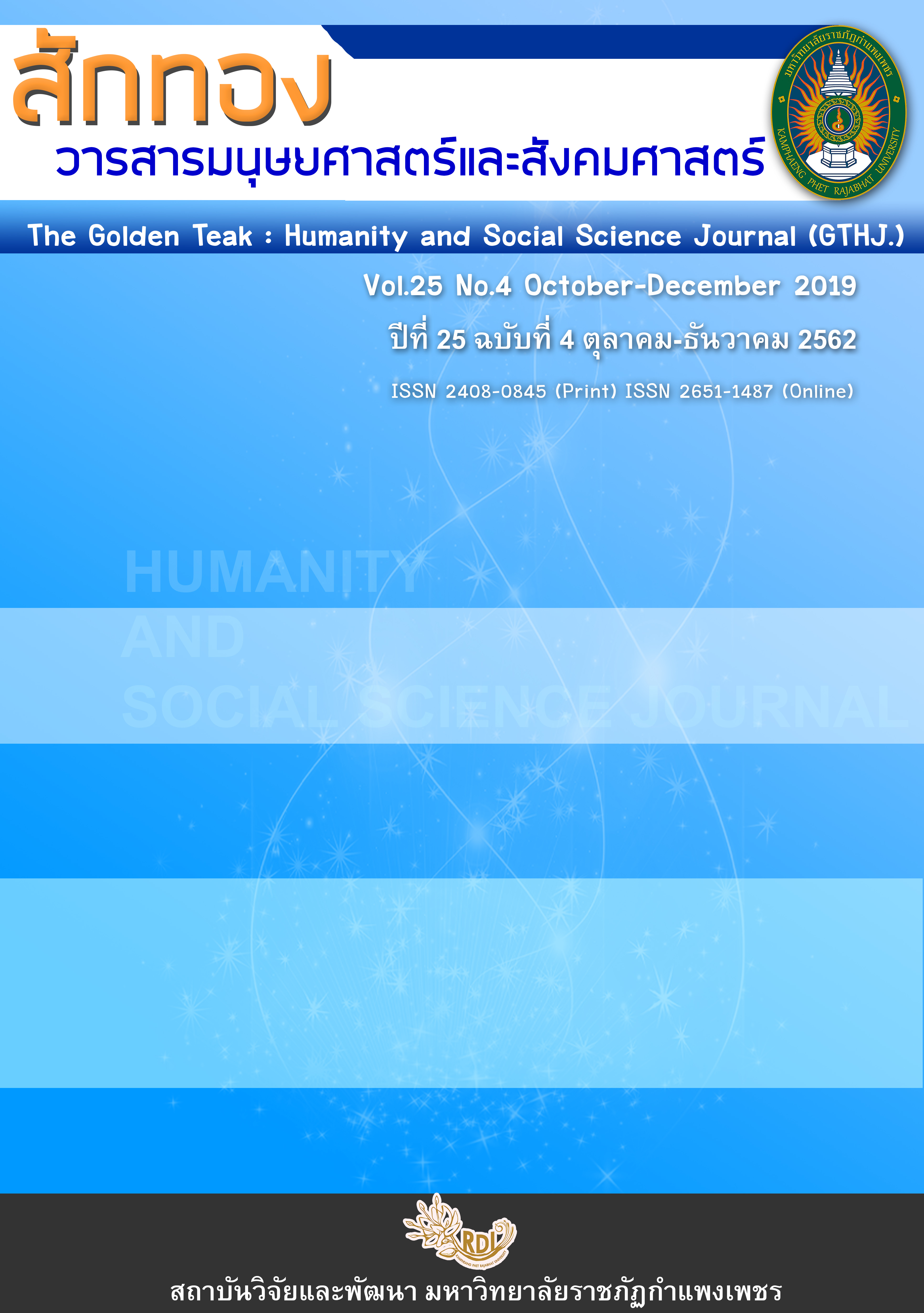The development of blended learning using activity-based to think out of the box techniques for encourage creativity at the undergraduate level
Main Article Content
Abstract
The research was divided into three phases: 1) problem analysis, 2) development of a blended learning model and 3) model implementation. In the first phase, the author focused on analyzing the problems of creative thinking of undergraduate students of Rajabhat Universities and the problems of instructional management for undergraduate students of Rajabhat Universities. In the second phase, the author developed a blended learning model by using activity-based learning with lateral thinking technique and assessed the appropriateness of the model for improving undergraduate-level creative thinking skills. In the third phase, the author implemented the instructional model with the second year students of the Computer Education Program at Rajabhat Mahasarakham University and assessed the efficiency of the model and surveyed the satisfaction of the students with the instructional model for improving creative thinking. The samples were selected by simple random sampling. The research results showed that the overall creative thinking of Rajabhat university undergraduate students was at a moderate level, and the problem of the instruction on creative thinking of Rajabhat universities was at a high level. Regarding the blended learning model, the average appropriateness of the model for improving creative thinking of undergraduate students of Rajabhat universities was at a high level (= 4.35). The findings indicated that the efficiency of the model for improving creative thinking of Rajabhat university students was 80/80. Additionally, the findings revealed that the average creative thinking of the experimental group and control group was significantly different at the .05 level. The average creative thinking of the students after using the blended learning model improved significantly. Finally, the overall satisfaction of the students with the blended learning model was at the highest level (
= 4.51).
Article Details
บทความที่ได้รับการตีพิมพ์เป็นลิขสิทธิ์ของวารสาร สักทอง : วารสารมนุษยศาสตร์และสังคมศาสตร์ สถาบันวิจัยและพัฒนา มหาวิทยาลับราชภัฏกำแพงเพชร
ข้อคิดเห็นใดๆ ที่ปรากฎในวารสารเป็นวรรณกรรมของผู้เขียนโดยเฉพาะ ซึ่งมหาวิทยาลัยราชภัฏกำแพงเพชรและบรรณาธิการไม่จำเป็นต้องเห็นด้วย
References
focused programs. And computer-based learning based on mixed-group learning
theory. Circuit Analysis. The Golden Teak : Humanity and Social Science Journal
(GTHJ.), 22(1).
Kuder, G.F., & Richardson, M.W. (1937). The theory of the estimation of test reliability.
Psychometrika, 2(3), 151-160.
Payom, S. (2008). Relationships between Critical Thinking, Creativity and Scientific Process
of Problem Solving Ability of Matthayomsuksa Three Students. Thesis of Master
Degree of Education in Educational Measurement and Research Prince of Songkla
University.
Phichittra, T. (2013). The Development of Teaching Model : Curriculum Development
Course by using Research based learning Approach for pre-service Teachers. Thesis
of Doctor Degree of Philosophy Program in Curriculum and Instruction Department of
Curriculum and Instruction Graduate School Silpakorn University.
Pisutha, A. (2007). Educational Software Development. Mahasarakham : Faculty of Science
and Technology Mahasarakham Rajabhat University.
Promwong, C. (1977). Performance media learning test. [Online]. Available :
https://www.slideshare.net/ittpatinya/ss-39561953 [2560, February 2].
NBT 2HD. (2016). King's Science To sustainable development 8 Sep 60. [Online]. Available :
https://www.youtube.com/watch?v=xGd_fBkccFA. [2560, January 5].
RMU Office of Academic Promotion and Registration. (2018). [Online]. Available :
https://regis.rmu.ac.th/registrar/studentset.asp [2018, April 5].
Songsak, S. (2009). The Development of a Web-Based Collaborative Learning Model using Principles of a Project Approach. Thesis Ph.D. King Mongkut's University of Technology North Bangkok.Teantong Monchai. (2554). Courseware design and development for CAI. (3rd edition) Bangkok : Department of Computer Education Faculty of Industrial Education King Mongkut's University of Technology North Bangkok.
Torrance, E.P. & Press, P. (1966). Torrance tests of creative thinking. Princeton, N.J : Personnel Press.
Tullavantana, R. & Sujpluem, P. (2003). The Study Effect of Emphasizing on Lateral Thinking Technique for Developing Creative Thinking of Student : The Case Study of Communication Arts at Dhurakijpundit University. [Online]. Available : https://www.youtube.com/watch?v=xGd_fBkccFA [2560, October 14].


